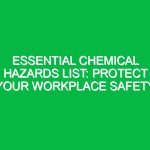Welcome to Our Toolbox Talk
Hello Team,
Today, we’re going to focus on a critical aspect of our daily operations: Hand Safety and Injury Prevention. This toolbox talk aims to equip you with the knowledge and tools necessary to keep your hands safe while you work. Our hands are essential for nearly every task we perform, and injuries can have lasting impacts both personally and professionally.
Why Hand Safety Matters
Hand injuries are one of the most common workplace injuries, accounting for a significant portion of lost time and productivity. These injuries not only affect your ability to work but can also lead to long-term health issues and psychological stress. By prioritizing Hand Safety, we can prevent accidents and promote a safe working Environment for everyone.
Understanding Hand Hazards
Before we dive into Safety Measures, let’s identify some common hand Hazards you might encounter:
- Sharp Objects: Tools, glass, and metal can cause cuts and lacerations.
- Heavy Objects: Lifting or moving items improperly can lead to crush injuries.
- Chemical Exposure: Many chemicals can cause Burns or skin irritations.
- Power Tools: Improper use can result in severe injuries.
- Heat and Cold: Exposure to extreme temperatures can lead to burns or frostbite.
Key Practices for Hand Safety
To ensure Safety, here are essential practices to incorporate into your daily routine:
1. Always Wear Appropriate PPE
Personal Protective Equipment (PPE) is your first line of defense against Hand Injuries. Ensure you’re wearing the right type of gloves for the task at hand:
- Cut-Resistant Gloves: Ideal for handling sharp tools.
- Heat-Resistant Gloves: Necessary when working with hot materials.
- Chemical-Resistant Gloves: Important when handling hazardous substances.
Always inspect your gloves for wear and tear before use, and replace them if they are damaged.
2. Proper Tool Usage
Using tools correctly is crucial for preventing injuries. Follow these guidelines:
- Read the manufacturer’s instructions before using any tool.
- Ensure tools are in good working condition before use.
- Use the right tool for the job—never improvise.
- Keep your hands clear of moving parts and blades.
3. Maintain a Clean Work Environment
A cluttered workspace can lead to accidents. Keep your work area organized:
- Remove unnecessary tools and materials from your workspace.
- Store tools properly when not in use.
- Clean up spills immediately to prevent slips and falls.
4. Be Mindful of Your Surroundings
Awareness of your environment is key to preventing injuries:
- Always look before you reach for something.
- Be aware of other workers around you, especially when using tools.
- Communicate with your team when moving heavy or large objects.
5. Take Regular Breaks
Fatigue can lead to mistakes. Make sure to take regular breaks to rest your hands and refocus your mind. Stretching your hands and fingers during breaks can also help reduce strain.
Real-Life Scenarios and Lessons Learned
Let’s consider a hypothetical scenario to illustrate the importance of hand safety. Imagine a worker named Mike, who is using a box cutter to open a package. He’s in a hurry and decides to cut towards himself instead of away. Suddenly, the blade slips, and he ends up with a cut on his palm.
This simple mistake could have been avoided if Mike had taken a moment to follow proper cutting techniques and used a safer tool for the job. This incident not only caused Mike pain but also resulted in lost productivity and increased stress for the team.
Hand injuries can happen in an instant, but they can have lasting repercussions. This is why it’s critical to consistently practice Hand Safety and Injury Prevention.
Regulations and Standards
Compliance with safety Regulations is essential for both legal and ethical reasons. Familiarize yourself with relevant standards, such as:
- OSHA Regulations: The Occupational Safety and Health Administration sets forth guidelines for Workplace Safety, including hand safety.
- ANSI/ISEA Standards: These standards provide specifications for hand protection and PPE.
Understanding and adhering to these regulations not only helps keep you safe but also protects our company from potential liabilities.
Open Discussion
Now that we’ve covered the key aspects of Hand Safety and Injury Prevention, let’s take a moment to discuss. Here are a few questions to consider:
- What hand safety practices do you currently follow in your daily tasks?
- Have you experienced or witnessed any hand injuries in the workplace? What could have been done to prevent them?
- Are there any additional Safety Measures you think we should implement?
Feel free to share your thoughts and experiences. Your input can help us create a safer work environment for everyone.
Conclusion
In summary, Hand Safety and Injury Prevention Safety Talk is vital for ensuring we all go home safe and sound at the end of the day. By wearing appropriate PPE, using tools correctly, maintaining a clean work environment, being mindful of our surroundings, and taking regular breaks, we can significantly reduce the risk of hand injuries.
Thank you all for your attention today. Remember, our hands are invaluable tools, and it’s our responsibility to protect them. Let’s commit to practicing these safety measures every day. Stay safe out there!


